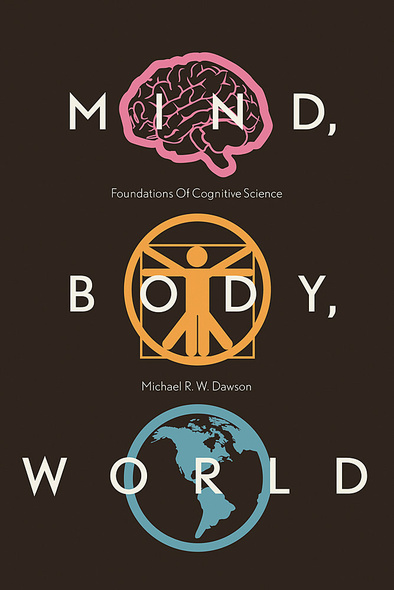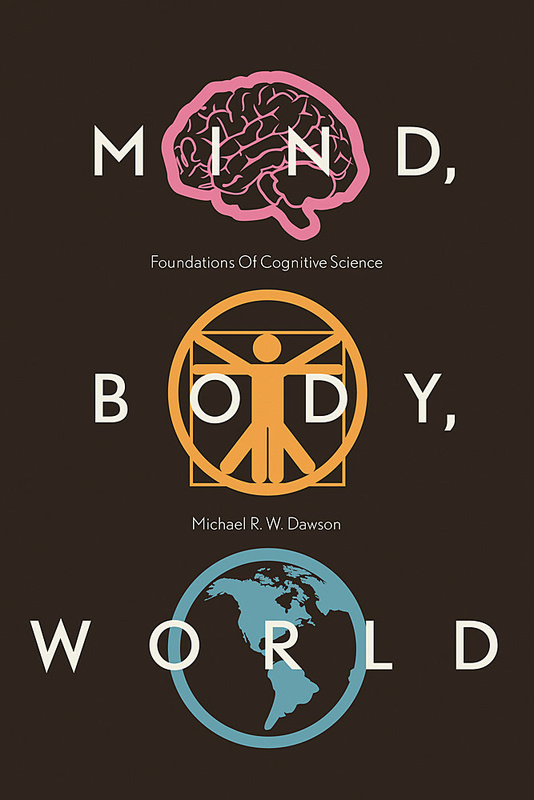Mind, Body, World
Foundations of Cognitive Science
Cognitive science arose in the 1950s when it became apparent that anumber of disciplines, including psychology, computer science,linguistics, and philosophy, were fragmenting. Perhaps owing to thefield’s immediate origins in cybernetics, as well as to thefoundational assumption that cognition is information processing,cognitive science initially seemed more unified than psychology.However, as a result of differing interpretations of the foundationalassumption and dramatically divergent views of the meaning of the terminformation processing, three separate schools emerged: classicalcognitive science, connectionist cognitive science, and embodiedcognitive science.
Examples, cases, and research findings taken from the wide range ofphenomena studied by cognitive scientists effectively explain andexplore the relationship among the three perspectives. Intended tointroduce both graduate and senior undergraduate students to thefoundations of cognitive science, <i>Mind, Body, World</i>addresses a number of questions currently being asked by thosepracticing in the field: What are the core assumptions of the threedifferent schools? What are the relationships between these differentsets of core assumptions? Is there only one cognitive science, or arethere many different cognitive sciences? Giving the schools equaltreatment and displaying a broad and deep understanding of the field,Dawson highlights the fundamental tensions and lines of fragmentationthat exist among the schools and provides a refreshing and unifyingframework for students of cognitive science.
List of Figures and Tables | ix
Preface | xiii
Who Is This Book Written For? | xiv
Acknowledgements | xv
Chapter 1. The Cognitive Sciences: One or Many? | 1
1.0 Chapter Overview | 1
1.1 A Fragmented Psychology | 2
1.2 A Unified Cognitive Science | 3
1.3 Cognitive Science or the Cognitive Sciences? | 6
1.4 Cognitive Science: Pre-paradigmatic? | 13
1.5 A Plan of Action | 16
Chapter 2. Multiple Levels of Investigation | 19
2.0 Chapter Overview | 19
2.1 Machines and Minds | 20
2.2 From the Laws of Thought to Binary Logic | 23
2.3 From the Formal to the Physical | 29
2.4 Multiple Procedures and Architectures | 32
2.5 Relays and Multiple Realizations | 35
2.6 Multiple Levels of Investigation and Explanation | 38
2.7 Formal Accounts of Input-Output Mappings | 40
2.8 Behaviour by Design and by Artifact | 41
2.9 Algorithms from Artifacts | 43
2.10 Architectures against Homunculi | 46
2.11 Implementing Architectures | 48
2.12 Levelling the Field | 51
Chapter 3. Elements of Classical Cognitive Science | 55
3.0 Chapter Overview | 55
3.1 Mind, Disembodied | 56
3.2 Mechanizing the Infinite | 59
3.3 Phrase Markers and Fractals | 65
3.4 Behaviourism, Language, and Recursion | 68
3.5 Underdetermination and Innateness | 72
3.6 Physical Symbol Systems | 75
3.7 Componentiality, Computability, and Cognition | 78
3.8 The Intentional Stance | 82
3.9 Structure and Process | 85
3.10 A Classical Architecture for Cognition | 89
3.11 Weak Equivalence and the Turing Test | 93
3.12 Towards Strong Equivalence | 97
3.13 The Impenetrable Architecture | 106
3.14 Modularity of Mind | 113
3.15 Reverse Engineering | 119
3.16 What is Classical Cognitive Science? | 122
Chapter 4. Elements of Connectionist Cognitive Science | 125
4.0 Chapter Overview | 125
4.1 Nurture versus Nature | 126
4.2 Associations | 133
4.3 Nonlinear Transformations | 139
4.4 The Connectionist Sandwich | 142
4.5 Connectionist Computations: An Overview | 148
4.6 Beyond the Terminal Meta-postulate | 149
4.7 What Do Output Unit Activities Represent? | 152
4.8 Connectionist Algorithms: An Overview | 158
4.9 Empiricism and Internal Representations | 159
4.10 Chord Classification by a Multilayer Perceptron | 162
4.11 Trigger Features | 172
4.12 A Parallel Distributed Production System | 177
4.13 Of Coarse Codes | 184
4.14 Architectural Connectionism: An Overview | 188
4.15 New Powers of Old Networks | 189
4.16 Connectionist Reorientation | 193
4.17 Perceptrons and Jazz Progressions | 195
4.18 What Is Connectionist Cognitive Science? | 198
Chapter 5. Elements of Embodied Cognitive Science | 205
5.0 Chapter Overview | 205
5.1 Abandoning Methodological Solipsism | 206
5.2 Societal Computing | 210
5.3 Stigmergy and Superorganisms | 212
5.4 Embodiment, Situatedness, and Feedback | 216
5.5 Umwelten, Affordances, and Enactive Perception | 219
5.6 Horizontal Layers of Control | 222
5.7 Mind in Action | 224
5.8 The Extended Mind | 230
5.9 The Roots of Forward Engineering | 235
5.10 Reorientation without Representation | 239
5.11 Robotic Moments in Social Environments | 245
5.12 The Architecture of Mind Reading | 250
5.13 Levels of Embodied Cognitive Science | 255
5.14 What Is Embodied Cognitive Science? | 260
Chapter 6. Classical Music and Cognitive Science | 265
6.0 Chapter Overview | 265
6.1 The Classical Nature of Classical Music | 266
6.2 The Classical Approach to Musical Cognition | 273
6.3 Musical Romanticism and Connectionism | 280
6.4 The Connectionist Approach to Musical Cognition | 286
6.5 The Embodied Nature of Modern Music | 291
6.6 The Embodied Approach to Musical Cognition | 301
6.7 Cognitive Science and Classical Music | 307
Chapter 7. Marks of the Classical? | 315
7.0 Chapter Overview | 315
7.1 Symbols and Situations | 316
7.2 Marks of the Classical | 324
7.3 Centralized versus Decentralized Control | 326
7.4 Serial versus Parallel Processing | 334
7.5 Local versus Distributed Representations | 339
7.6 Internal Representations | 343
7.7 Explicit Rules versus Implicit Knowledge | 345
7.8 The Cognitive Vocabulary | 348
7.9 From Classical Marks to Hybrid Theories | 355
Chapter 8. Seeing and Visualizing | 359
8.0 Chapter Overview | 359
8.1 The Transparency of Visual Processing | 360
8.2 The Poverty of the Stimulus | 362
8.3 Enrichment via Unconscious Inference | 368
8.4 Natural Constraints | 371
8.5 Vision, Cognition, and Visual Cognition | 379
8.6 Indexing Objects in the World | 383





